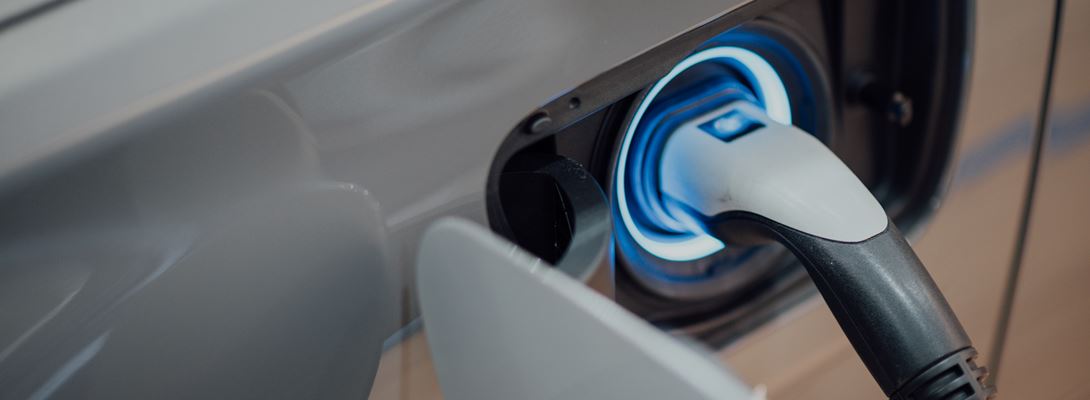The National Grid have a great article which you can read on their website. We’ve summarised their main points here in the context of Guernsey.
Electric vehicles aren’t the future, they’re the present
In the UK, the ban on new petrol and diesel car sales was brought forward to 2030 to help speed up our transition to electric vehicles (EVs).
1 kW of electricity can provide around 4 miles of driving. If your car charges overnight during the off-peak Economy 12 times, a typical Guernsey mileage may cost around £5 a week.
Charge a vehicle between 11pm and 5am to drive using 100% renewable energy. During this period, Guernsey's imported hydro, wind and solar energy supplies 100% of the island's needs meaning you can drive on cleaner energy year-round just by charging at night.
Driving electric helps cultivate a healthier ecosystem with less harmful emissions in our local sea and air. As an EV driver, we can reduce our running costs while supporting both the health of our planet, and the health of everyone around us.
Even better, when you charge an EV overnight, you’re reducing carbon emissions even further. This is because charging during off-peak periods helps balance the grid which reduces our reliance on the power station.
How do electric cars work?
Petrol and diesel cars rely on an internal combustion engine (ICE) to convert fuel into kinetic energy to move a vehicle. This fuel contains carbon meaning waste greenhouse gas emissions in the form of combustion gas are produced as a bi-product of this energy conversion.
These waste gases are expelled from the exhaust pipe into the air we breathe and have been a cause for concern for many years. The reason you never see an exhaust pipe on a pure electric vehicle is because there is no engine - meaning no carbon dioxide and other harmful emissions.
Similar to a smart phone, EVs are powered directly from a battery and use electricity as a ready-to-use power source to drive an electric motor. When the car gets recharged, electricity creates chemical changes inside the battery meaning no hydrocarbon fuel needs to be burnt to produce motion.
With electric vehicles, the Internal Combustion Engine will be a thing of the past
How do EV batteries work?
EV batteries are a world apart from the heavy, lead-acid batteries used inside conventional cars.
They use thousands of individual lithium-ion cells that work together to store energy and produce power.
How long do electric car batteries last?
“The battery will outlive the car” says Graeme Cooper, the National Grid’s Transport Decarbonisation Director.
Most EV batteries can have a life expectancy of 15-20 years within the electric car itself. The lithium-ion cells inside the battery are gently topped up using a Battery Management System (BMS) which helps preserve battery efficiency and lifespan.
EV battery technology is rapidly evolving and as it develops, the battery lifespan is likely to increase. They’ll also become cheaper, smaller and lighter, which will help reduce the overall cost of an electric vehicle.
When an electric car battery’s performance drops to 70% or less, it’s ‘second life’ revs into action. Usually this is after 100,000 to 200,000+ miles on the road.
How far can you go on a single charge?
You might have heard of range anxiety; this is worry that an electric car's battery will run out of power before the destination or a charging point is reached.
In Guernsey, our short distances make it the perfect location for driving electric. But what about taking your electric car away and driving very long distances in the UK or Europe?
Autotrader have written this article about car charging which is worth a read, and includes a handy comparison tool to see how far you would get on a single charge
Find out how far you'd get on a single charge
Second Life Batteries
Some people use old EV batteries as static battery energy storage systems in their garages or cupboards.
EV batteries can also be used to power manufacturing plants and streets. Eventually, even the factories currently producing the batteries could be powered using repurposed batteries.
EV manufacturers are making some exciting investments into large-scale battery storage systems across the world.
- Nissan are using retired EV batteries to provide back-up power to the Amsterdam Arena
- Toyota will be using ex-EV batteries to store solar energy which will help power drink fridges, food warmers and fresh food containers inside convenience stores in Japan.
- Renault will be repurposing batteries from the Renault Zoe to use as Powervault home energy storage systems, which are available to buy here in Guernsey. Nissan have also launched XStorage, using the Leaf’s car batteries as energy storage systems.
Can EV batteries be recycled?
Yes.
As electric cars become the leading transport choice on our roads, the race is on to find even better recycling methods to further unlock their full green potential.
As the batteries are so reliable and long-lived, we can expect huge growth in recycling technology.
It makes no economic or environmental sense for EV batteries to be dumped in landfill and eventually it is likely a remanufacturing ecosystem will be built when more batteries are in circulation.
Smelting and leaching will be finessed in the coming years, as will the battery designs to optimise the separation and recycling process of EV batteries at the end of their usable life.
The Office for Zero Emission Vehicles (OZEC) in the UK is taking battery recycling so seriously that they launched a £7,000,000 competition for on-vehicle solutions that will improve sustainability and address challenges with transitioning to zero-emission vehicles.
Home Charging Points
A great way to help future-proof a property is to have an EV car charging unit installed.
Most electric vehicles only need a charging point that's 3.6kW or less. This means less hassle as you won't need to apply for additional electricity load for your property and just need to register it with Guernsey Electricity.
Read more about charging points in Guernsey
A conventional 3-pin plug may take all night to fully charge a vehicle and should only be used occasionally to charge an electric vehicle. Comparatively, a home charging point can charge an electric vehicle more safely in just a few hours. If you’re home for the night, it’s the perfect way to make sure you’re always fully charged. And unlike a smart phone, you won’t need to charge your vehicle everyday – some drivers here in Guernsey only need to charge their EV once or twice a week.
Did you know you can charge a car using 100% renewable energy? Simply set the on-board timer in your electric vehicle to charge between 11pm and 5am. During this quiet period, we can rely on imported renewable energy for 100% of our electricity needs.
To work out how long it’ll take your charge, simply divide the EV’s capacity in kWh by the car charger’s kW capacity.
For example, a 20kWh electric vehicle charging on a 3.6kW charging point will take around 5-6 hours to charge and cost roughly £5. This could last you a week or more as a typical daily mileage in Guernsey is around 14-20 miles.
If you’re planning to have a 3.6kW electric car charging point installed, don’t forget to register your charger with Guernsey Electricity.










